ART NEWS: June.01
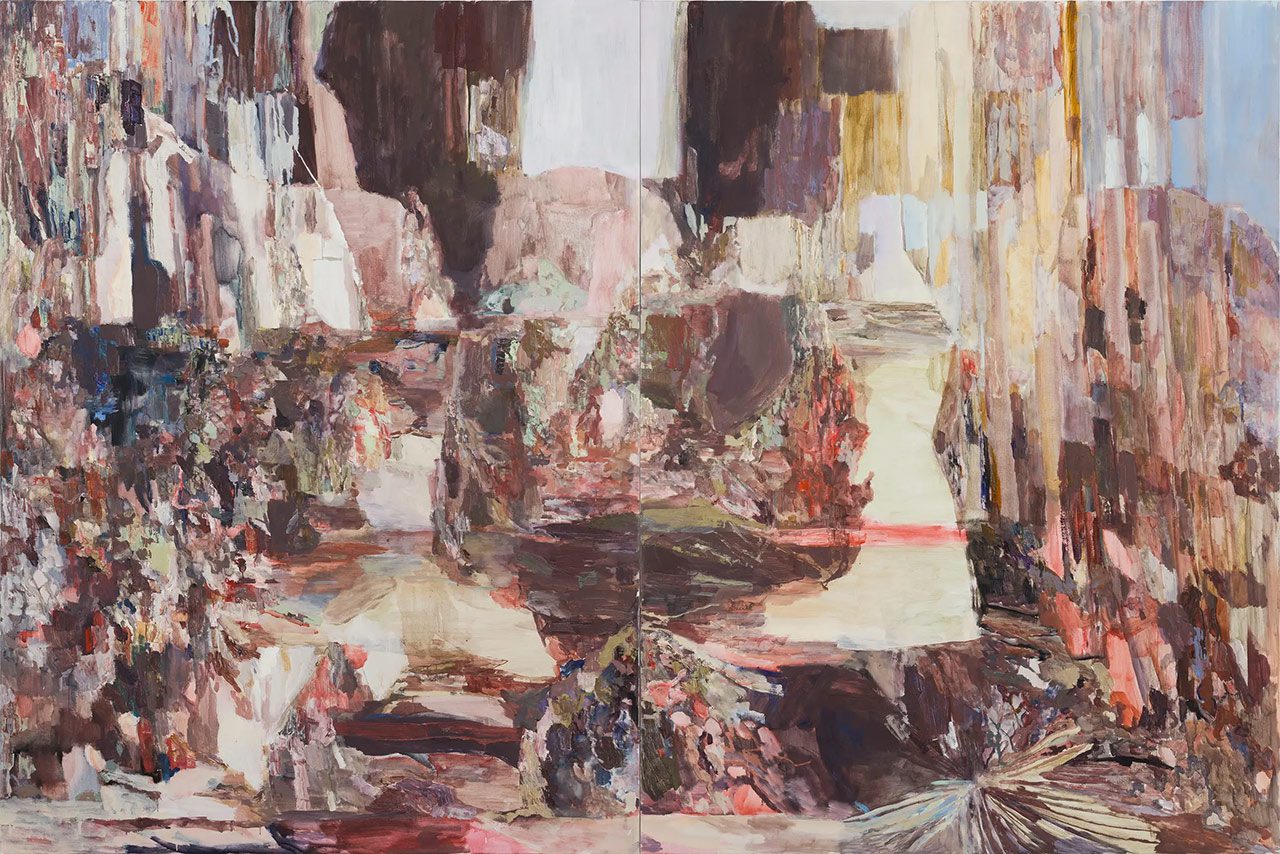 Francesca Mollett’s large-scale, abstract paintings begin quickly and horizontally, the watery mix of charcoal, acrylic and diluted oil paint permitted to spread lithely across the surface of her canvas. Later, she slowly works and reworks the passages of oil paint, much like a writer might write and rewrite sentences in order to reach the precision of an idea. This is a process of mark making, looking, and reacting to what is emerging, and as such gradually finding an understanding of how different parts of the painting – motion, color and texture – relate to each other. Elements of the paint may be wiped, leaving an impression of what came before them, or a palette knife may lift and deposit parts of the painting back upon itself, a process akin to collage. In this way, Mollett’s works hold within them a density of moments in time. Fragments of surface split off from what was previously a continuum are enmeshed once again later on, like a folding of time upon itself. Mollett cites her constant practice of reading as informing her emotional or relational position in the work. There is a literary parallel in Mollett’s paintwork, which, like language, both describes something else – an image, an idea – and at the same time it simply is – it exists on the canvas in a physical and material sense. It is within this tension that Mollett’s works produce (in her own words) their “shimmer” – a visual effect and at the same time a perceptual revelation linking the experience of the painting to the world outside. Info: Modern Art, 4–8 Helmet Row, London, United Kingdom, Duration: 5/6-19/7/2025, Days & Hours: Wed-Sat 11:00-18:00, www.modernart.net/
Francesca Mollett’s large-scale, abstract paintings begin quickly and horizontally, the watery mix of charcoal, acrylic and diluted oil paint permitted to spread lithely across the surface of her canvas. Later, she slowly works and reworks the passages of oil paint, much like a writer might write and rewrite sentences in order to reach the precision of an idea. This is a process of mark making, looking, and reacting to what is emerging, and as such gradually finding an understanding of how different parts of the painting – motion, color and texture – relate to each other. Elements of the paint may be wiped, leaving an impression of what came before them, or a palette knife may lift and deposit parts of the painting back upon itself, a process akin to collage. In this way, Mollett’s works hold within them a density of moments in time. Fragments of surface split off from what was previously a continuum are enmeshed once again later on, like a folding of time upon itself. Mollett cites her constant practice of reading as informing her emotional or relational position in the work. There is a literary parallel in Mollett’s paintwork, which, like language, both describes something else – an image, an idea – and at the same time it simply is – it exists on the canvas in a physical and material sense. It is within this tension that Mollett’s works produce (in her own words) their “shimmer” – a visual effect and at the same time a perceptual revelation linking the experience of the painting to the world outside. Info: Modern Art, 4–8 Helmet Row, London, United Kingdom, Duration: 5/6-19/7/2025, Days & Hours: Wed-Sat 11:00-18:00, www.modernart.net/
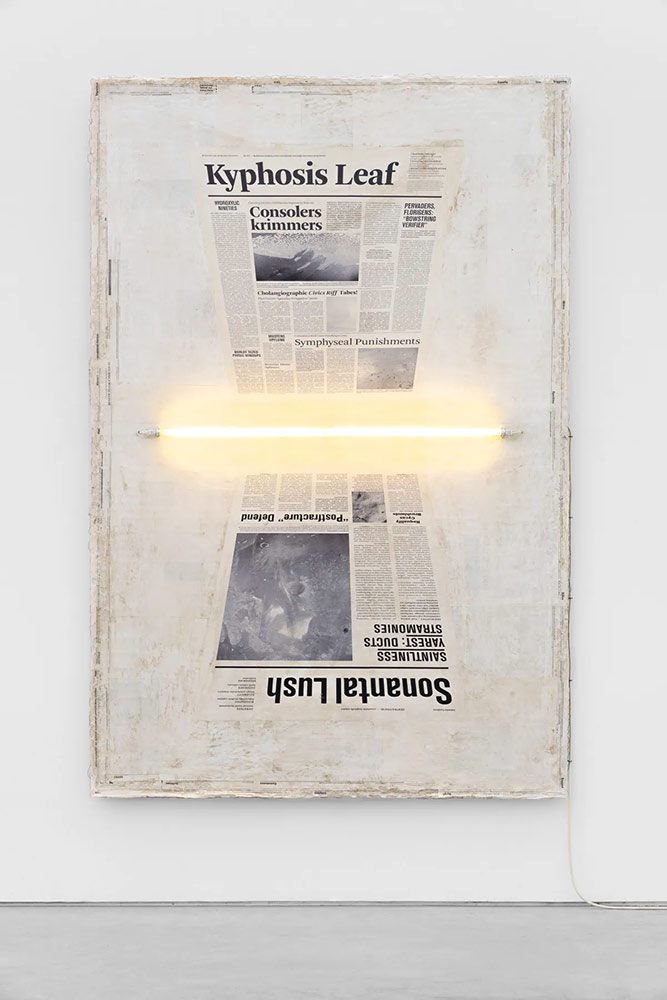 The exhibition “Three Related Works” is a continuation of Mark Manders’ ongoing project “Self-Portrait as a Building”, a project he began in 1986 by creating a hypothetical floor plan using small objects, such as pencils, rulers, and pieces of wood. Gradually expanding in both scale and scope, to-date, iterations of the project have materialised in sculpture, installation, painting, drawing, writing, and publishing. For this exhibition, Manders has chosen to exhibit sculptures, paintings, and a mixed-media installation. His sculptural works frequently portray anonymous figures, cast in bronze, though with the outward appearance and texture of dried or wet clay. One such example is a bronze edition of “Ramble Room Chair” (2010-25). The sculpture comprises a clay-like figure resting on a domestic chair. Possessing no arms or lower torso—a wooden plank holds the body like proxy legs—the sculpture seems vulnerable and dependent, yet at the same time peaceful, serene and totally at ease. Upon closer inspection, the figure does not directly touch the painted bronze chair but instead rests on a stack of newspapers. These are not ordinary newspapers, which would be tied to a specific date and place, but the artist’s own Notional Newspapers, created over nearly twenty years and containing every word in the English language. Info: Modern Art, 7 Bury Street, London, United Kingdom, Duration: 6/6-12/7/2025, Days & Hours: Wed-Sat 11:00-18:00, www.modernart.net/
The exhibition “Three Related Works” is a continuation of Mark Manders’ ongoing project “Self-Portrait as a Building”, a project he began in 1986 by creating a hypothetical floor plan using small objects, such as pencils, rulers, and pieces of wood. Gradually expanding in both scale and scope, to-date, iterations of the project have materialised in sculpture, installation, painting, drawing, writing, and publishing. For this exhibition, Manders has chosen to exhibit sculptures, paintings, and a mixed-media installation. His sculptural works frequently portray anonymous figures, cast in bronze, though with the outward appearance and texture of dried or wet clay. One such example is a bronze edition of “Ramble Room Chair” (2010-25). The sculpture comprises a clay-like figure resting on a domestic chair. Possessing no arms or lower torso—a wooden plank holds the body like proxy legs—the sculpture seems vulnerable and dependent, yet at the same time peaceful, serene and totally at ease. Upon closer inspection, the figure does not directly touch the painted bronze chair but instead rests on a stack of newspapers. These are not ordinary newspapers, which would be tied to a specific date and place, but the artist’s own Notional Newspapers, created over nearly twenty years and containing every word in the English language. Info: Modern Art, 7 Bury Street, London, United Kingdom, Duration: 6/6-12/7/2025, Days & Hours: Wed-Sat 11:00-18:00, www.modernart.net/
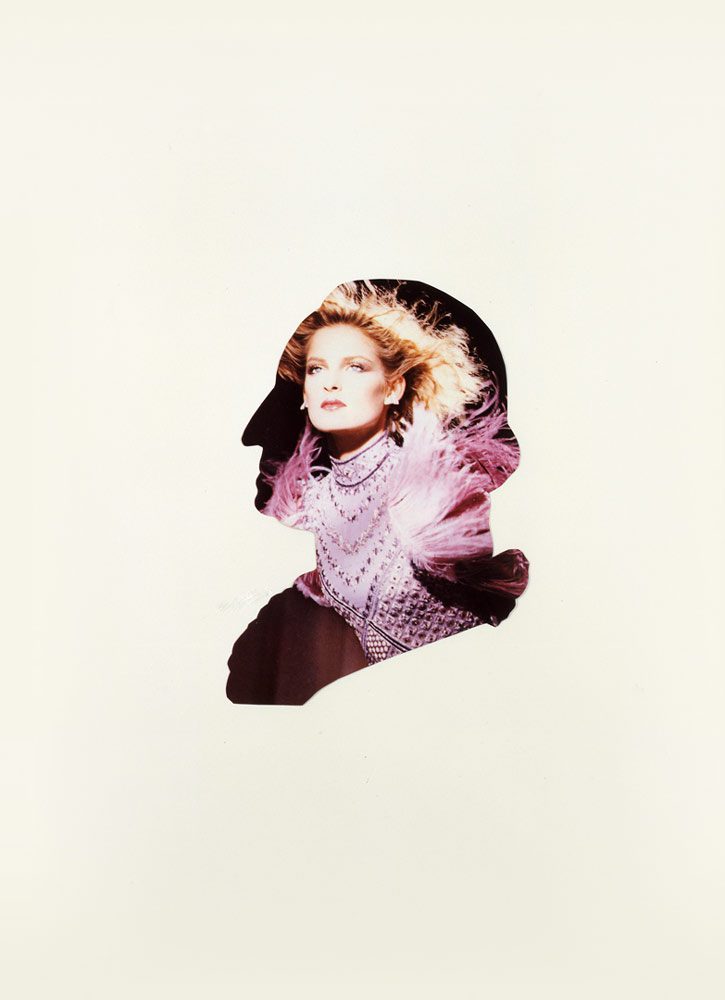 “Sherrie Levine: 1977–1988” is an exhibition devoted to the first eleven years of the American artist’s practice. Emerging alongside a group of like-minded artists and writers in the 1970s and 1980s, Levine utilized diverse mediums including photography, painting, collage, and sculpture, to challenge conventional assumptions around autonomy, originality, and agency. The earliest work in this exhibition, “Shoe Sale” (1977), saw Levine selling seventy-five pairs of identical, store-bought children’s shoes at a storefront gallery in New York City. This established the artist’s enduring relationship with the readymade, an artistic development conceived in 1913 by Marcel Duchamp in which prefabricated objects are redefined as artworks through designatory and contextual shifts. This interest in framing connects to some of Levine’s most celebrated works, from her “President Collages” (1979) to her many projects replicating canonical artworks by artists ranging from Walker Evans to Egon Schiele. Strategies of appropriation—by which preexisting, mass-circulated images are re-presented with little or no modification—dismantle entrenched beliefs in monolithic, stable narratives. Levine contrarily demands a consideration and questioning of context and contingency. Seemingly straightforward acts of copying belie the enigmatic conceptual complexity at the heart of her practice. Info: Aspen Art Museum, 637 E Hyman Ave, Aspen, CO, USA, Duration: 6/6-7/9/2025, Days & Hours: Tue-Sun 10:00-18:00, https://aspenartmuseum.org/
“Sherrie Levine: 1977–1988” is an exhibition devoted to the first eleven years of the American artist’s practice. Emerging alongside a group of like-minded artists and writers in the 1970s and 1980s, Levine utilized diverse mediums including photography, painting, collage, and sculpture, to challenge conventional assumptions around autonomy, originality, and agency. The earliest work in this exhibition, “Shoe Sale” (1977), saw Levine selling seventy-five pairs of identical, store-bought children’s shoes at a storefront gallery in New York City. This established the artist’s enduring relationship with the readymade, an artistic development conceived in 1913 by Marcel Duchamp in which prefabricated objects are redefined as artworks through designatory and contextual shifts. This interest in framing connects to some of Levine’s most celebrated works, from her “President Collages” (1979) to her many projects replicating canonical artworks by artists ranging from Walker Evans to Egon Schiele. Strategies of appropriation—by which preexisting, mass-circulated images are re-presented with little or no modification—dismantle entrenched beliefs in monolithic, stable narratives. Levine contrarily demands a consideration and questioning of context and contingency. Seemingly straightforward acts of copying belie the enigmatic conceptual complexity at the heart of her practice. Info: Aspen Art Museum, 637 E Hyman Ave, Aspen, CO, USA, Duration: 6/6-7/9/2025, Days & Hours: Tue-Sun 10:00-18:00, https://aspenartmuseum.org/
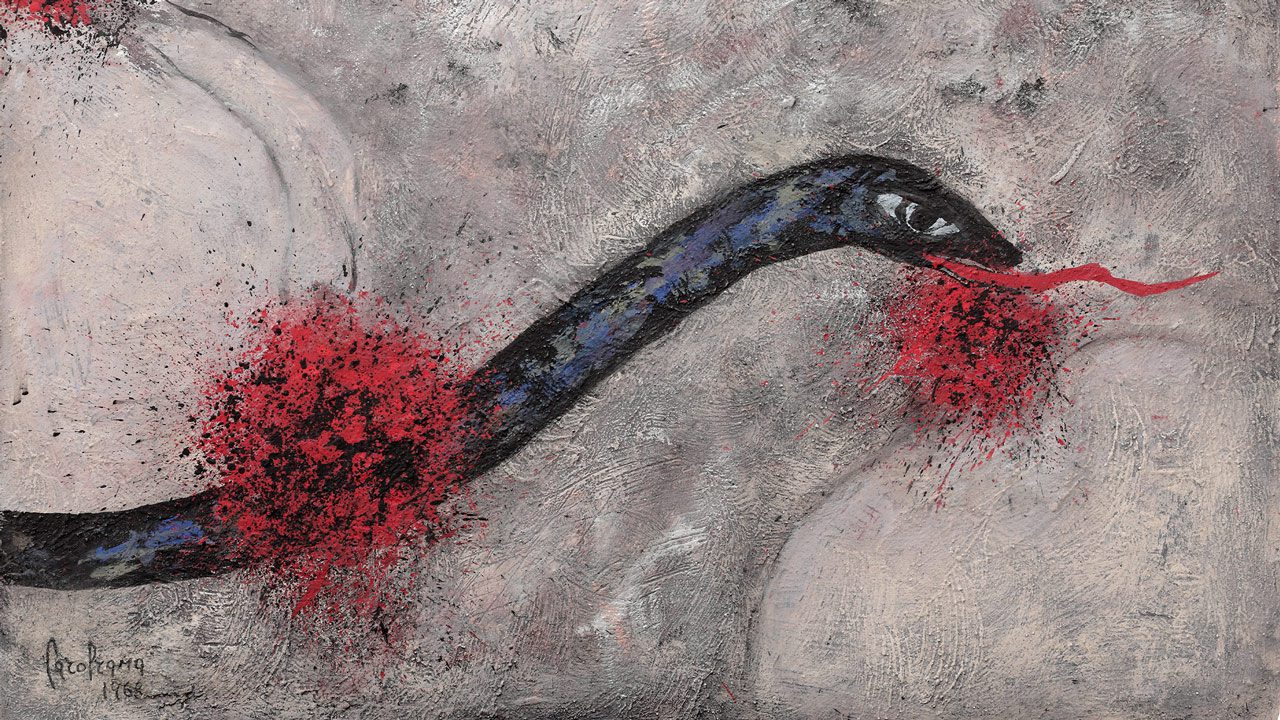 The exhibition “The Tongue, The Eye, The Foot” explores the human figure and its complex, psychological associations in the work of Carol Rama, who created art for over seventy years. This focused exhibition centers on a singular theme: the fragmented body as a site of fantasy and resistance in Rama’s work from the 1930s to the 1970s. Carol Rama created art for over seventy years, producing disparate bodies of work that reflect the turns of her own life and that of the zeitgeist. This focused exhibition centers on a singular theme: the fragmented body as a site of fantasy and resistance in Rama’s work from the 1930s to the 1970s. The show examines eroticism as an expressive throughline that pierces Rama’s practice in overt figurative scenes and abstract forms. Rama’s human forms—in whole, abstract, and formless incarnations—take shape as individual entities but impart a deeper sense of collective disobedience. Strange and often psychosexual, they foreground a sense of the forbidden, recalling sublimated truths and recessed memories. The fetishized and fragmented figure becomes more than a sum of its parts. Here, it becomes a lens to examine Rama’s radical depictions of the transgression, madness, joy, and defiance that defined her world. Info: Aspen Art Museum, 637 E Hyman Ave, Aspen, CO, USA, Duration: 6/6-7/9/2025, Days & Hours: Tue-Sun 10:00-18:00, https://aspenartmuseum.org/
The exhibition “The Tongue, The Eye, The Foot” explores the human figure and its complex, psychological associations in the work of Carol Rama, who created art for over seventy years. This focused exhibition centers on a singular theme: the fragmented body as a site of fantasy and resistance in Rama’s work from the 1930s to the 1970s. Carol Rama created art for over seventy years, producing disparate bodies of work that reflect the turns of her own life and that of the zeitgeist. This focused exhibition centers on a singular theme: the fragmented body as a site of fantasy and resistance in Rama’s work from the 1930s to the 1970s. The show examines eroticism as an expressive throughline that pierces Rama’s practice in overt figurative scenes and abstract forms. Rama’s human forms—in whole, abstract, and formless incarnations—take shape as individual entities but impart a deeper sense of collective disobedience. Strange and often psychosexual, they foreground a sense of the forbidden, recalling sublimated truths and recessed memories. The fetishized and fragmented figure becomes more than a sum of its parts. Here, it becomes a lens to examine Rama’s radical depictions of the transgression, madness, joy, and defiance that defined her world. Info: Aspen Art Museum, 637 E Hyman Ave, Aspen, CO, USA, Duration: 6/6-7/9/2025, Days & Hours: Tue-Sun 10:00-18:00, https://aspenartmuseum.org/
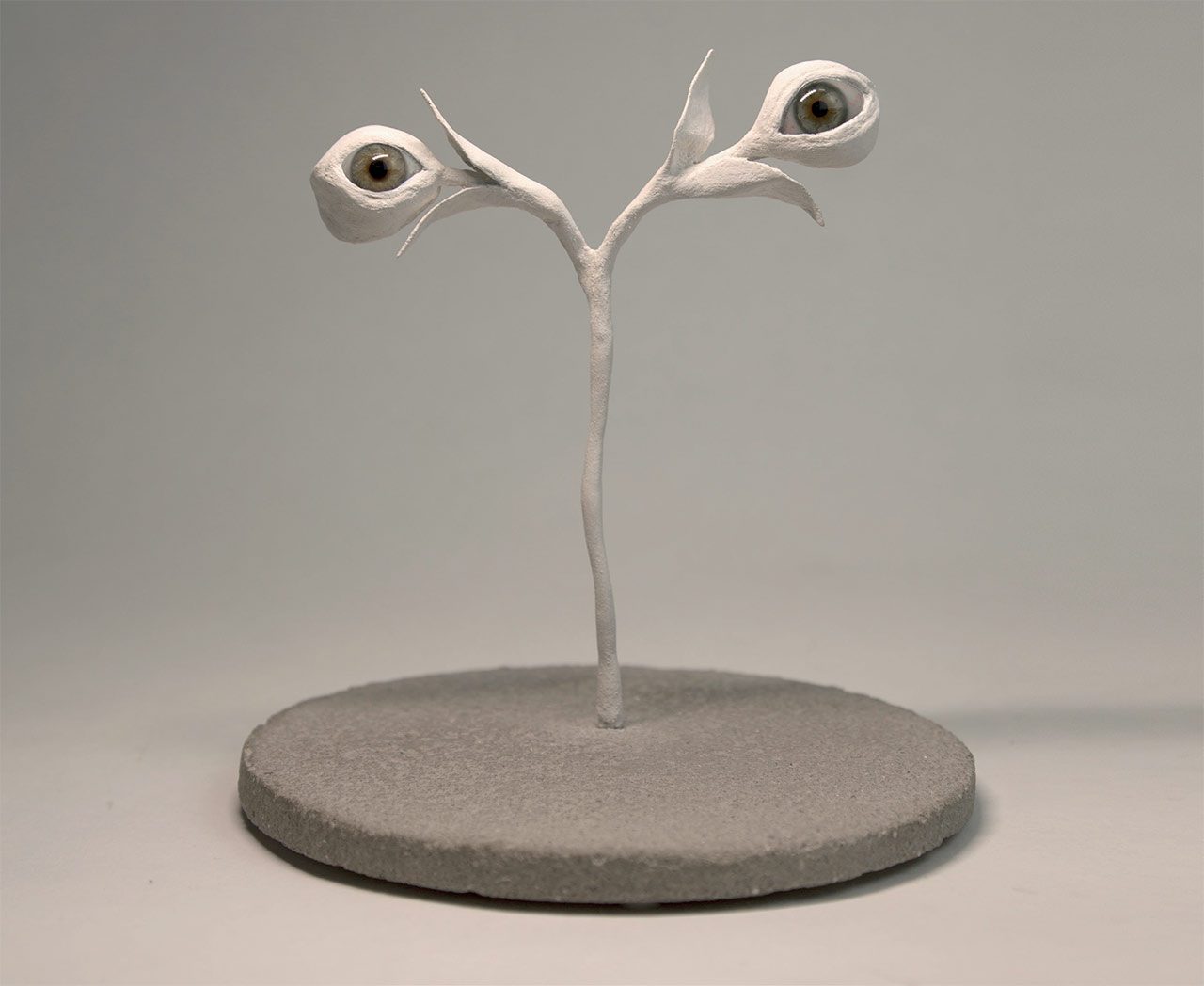 The exhibition “The Watcher” is designed around the totems The Gatekeepers FIRE and WATER by Ali Cherri, acquired in 2024 by the Museums of Marseille. On this occasion, the [mac] invited the artist to select works from the collections of the Museums of Marseille, ranging from Antiquity to the contemporary world, in order to put them in dialogue with his own sculptures, drawings, and videos. In an immersive and cinematic scenography, Ali Cherri offers a renewed perspective on these works through themes close to his heart: sleep, vulnerability, and the representation of living figures… The corpus of the exhibition was born from a meeting between the artist and objects, beyond the image they represent, guided by themes and emblematic gestures of his practice such as: animality, hybridity, gaze, face, materiality, vulnerability, and resistance. In total, around 80 pieces are exhibited, including a large selection of works by the artist, mixing various types: sculptures, stone works, paintings, archaeological objects, photographs, and videos. Ali Cherri selects them as he chooses the actors for his films, whether it be a brickmaker in Sudan or an elderly woman in a Cypriot village. This is an opportunity to renew the discourse on the Marseille museum collections over the long term, through the gaze of a major artist in the contemporary scene. Info: [mac] Musée d’Art Contemporain , 69 Av. d’Haifa, Marseille, France, Duration: 6/6/2025-4/1/2026, Days & Hours: Tue-San 9:00-18:0
The exhibition “The Watcher” is designed around the totems The Gatekeepers FIRE and WATER by Ali Cherri, acquired in 2024 by the Museums of Marseille. On this occasion, the [mac] invited the artist to select works from the collections of the Museums of Marseille, ranging from Antiquity to the contemporary world, in order to put them in dialogue with his own sculptures, drawings, and videos. In an immersive and cinematic scenography, Ali Cherri offers a renewed perspective on these works through themes close to his heart: sleep, vulnerability, and the representation of living figures… The corpus of the exhibition was born from a meeting between the artist and objects, beyond the image they represent, guided by themes and emblematic gestures of his practice such as: animality, hybridity, gaze, face, materiality, vulnerability, and resistance. In total, around 80 pieces are exhibited, including a large selection of works by the artist, mixing various types: sculptures, stone works, paintings, archaeological objects, photographs, and videos. Ali Cherri selects them as he chooses the actors for his films, whether it be a brickmaker in Sudan or an elderly woman in a Cypriot village. This is an opportunity to renew the discourse on the Marseille museum collections over the long term, through the gaze of a major artist in the contemporary scene. Info: [mac] Musée d’Art Contemporain , 69 Av. d’Haifa, Marseille, France, Duration: 6/6/2025-4/1/2026, Days & Hours: Tue-San 9:00-18:0
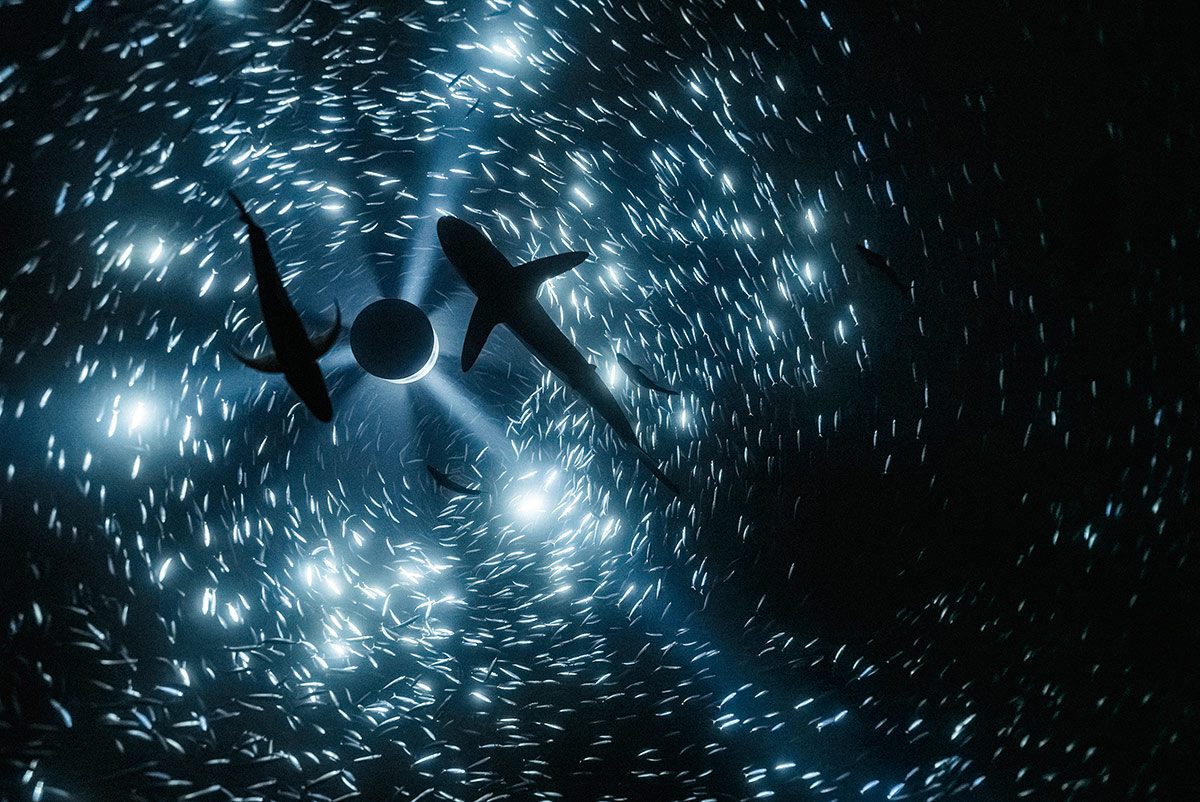 A core concern of Julian Charrière is how human beings inhabit the world and how the world, in turn, inhabits us. The comprehensive solo exhibition at Museum Tinguely presents photographs, sculptures, installations and new video works that deal with our relationship to Earth as a world of water—a liquidity that covers most of our planet with seas, lakes and ice, both habitat for a myriad of organisms and host to circulatory systems critical for the stability of our climate. Unfolding over three floors, the exhibition “Midnight Zone” engages with underwater ecologies, from the influential local presence of the Rhine to distant oceans, exploring the complexity of water as an elemental medium affected by anthropogenic degradation. Reflecting upon its flow and materiality, profundity and politics, its mundane and sacral dimensions, the solo show acts as a kaleidoscope, inviting us to dive deep. In the exhibition the artist invites visitors to think and feel with water: as atmosphere, memory, movement and kin. Drifting between deep-sea descent and cryospheric suspension, the exhibition unfolds as an immersive reflection on fluid worlds—not the sea as surface, but as substance, where boundaries dissolve. Info: Museum Tinguely, Paul Sacher-Anlage 1, Basel, Switzerland, Duration: 11/6-2/11/2025, Days & Hours: Tue-Wed & Fri-Sun 11:00-18:00, Thu 9:00-21:00, www.tinguely.ch/
A core concern of Julian Charrière is how human beings inhabit the world and how the world, in turn, inhabits us. The comprehensive solo exhibition at Museum Tinguely presents photographs, sculptures, installations and new video works that deal with our relationship to Earth as a world of water—a liquidity that covers most of our planet with seas, lakes and ice, both habitat for a myriad of organisms and host to circulatory systems critical for the stability of our climate. Unfolding over three floors, the exhibition “Midnight Zone” engages with underwater ecologies, from the influential local presence of the Rhine to distant oceans, exploring the complexity of water as an elemental medium affected by anthropogenic degradation. Reflecting upon its flow and materiality, profundity and politics, its mundane and sacral dimensions, the solo show acts as a kaleidoscope, inviting us to dive deep. In the exhibition the artist invites visitors to think and feel with water: as atmosphere, memory, movement and kin. Drifting between deep-sea descent and cryospheric suspension, the exhibition unfolds as an immersive reflection on fluid worlds—not the sea as surface, but as substance, where boundaries dissolve. Info: Museum Tinguely, Paul Sacher-Anlage 1, Basel, Switzerland, Duration: 11/6-2/11/2025, Days & Hours: Tue-Wed & Fri-Sun 11:00-18:00, Thu 9:00-21:00, www.tinguely.ch/
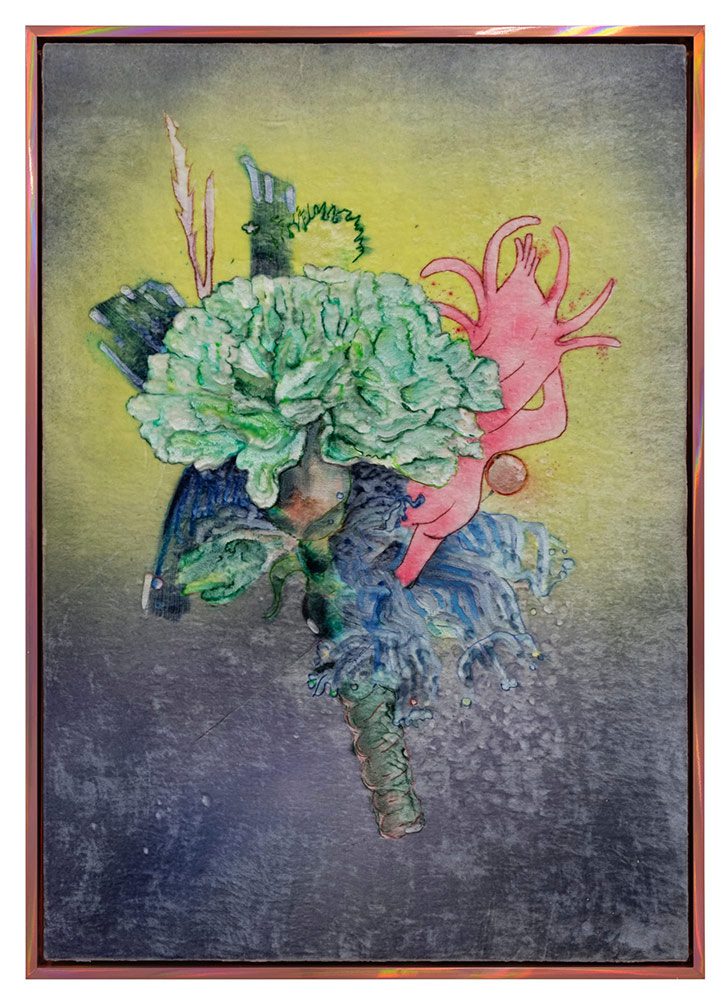 Executed with dyes on silk velvet, the works of Travis Boyer’s works in the exhibition “Personal Effects” explore how surfaces accrue meaning, inviting reflection on ornament, cultural memory, and queer embodiment. Rich in texture and layered with historical references, the works transform the decorative into the political and the sentimental into the critical. Through a fusion of self-styling, camp, and material sophistication, Boyer articulates a painterly language that embraces excess, ambiguity, and seduction. Velvet is both medium and metaphor in Boyer’s work. As a substrate, it carries a unique material history: once a fabric of aristocratic luxury, later a marker of bourgeois domesticity and, by the 1970s, a fabric of countercultural kitsch. In Boyer’s hands, this complex lineage is neither rejected nor idealized. He paints with a category of dyes known as protein dyes, used for animal substrates such as silk, wool, and hair, exploiting the material’s capacity for optical depth. Painting on both the reverse and front sides of the fabric, he allows pigments to bleed through or be pressed in. For this furry surface, he uses tools from beauty culture—steamers, atomizers, and industrial hairdryers—to sculpt and manipulate shifting planes of color and texture. Info: Galerie Peter Kilchmann, Rämistrasse 33, Zurich Switzerland, Duration: 14/6-25/7/2025, Days & Hours: Wed-Fri 11:00-18:00, Sat 11:00-17:00, /www.peterkilchmann.com/
Executed with dyes on silk velvet, the works of Travis Boyer’s works in the exhibition “Personal Effects” explore how surfaces accrue meaning, inviting reflection on ornament, cultural memory, and queer embodiment. Rich in texture and layered with historical references, the works transform the decorative into the political and the sentimental into the critical. Through a fusion of self-styling, camp, and material sophistication, Boyer articulates a painterly language that embraces excess, ambiguity, and seduction. Velvet is both medium and metaphor in Boyer’s work. As a substrate, it carries a unique material history: once a fabric of aristocratic luxury, later a marker of bourgeois domesticity and, by the 1970s, a fabric of countercultural kitsch. In Boyer’s hands, this complex lineage is neither rejected nor idealized. He paints with a category of dyes known as protein dyes, used for animal substrates such as silk, wool, and hair, exploiting the material’s capacity for optical depth. Painting on both the reverse and front sides of the fabric, he allows pigments to bleed through or be pressed in. For this furry surface, he uses tools from beauty culture—steamers, atomizers, and industrial hairdryers—to sculpt and manipulate shifting planes of color and texture. Info: Galerie Peter Kilchmann, Rämistrasse 33, Zurich Switzerland, Duration: 14/6-25/7/2025, Days & Hours: Wed-Fri 11:00-18:00, Sat 11:00-17:00, /www.peterkilchmann.com/
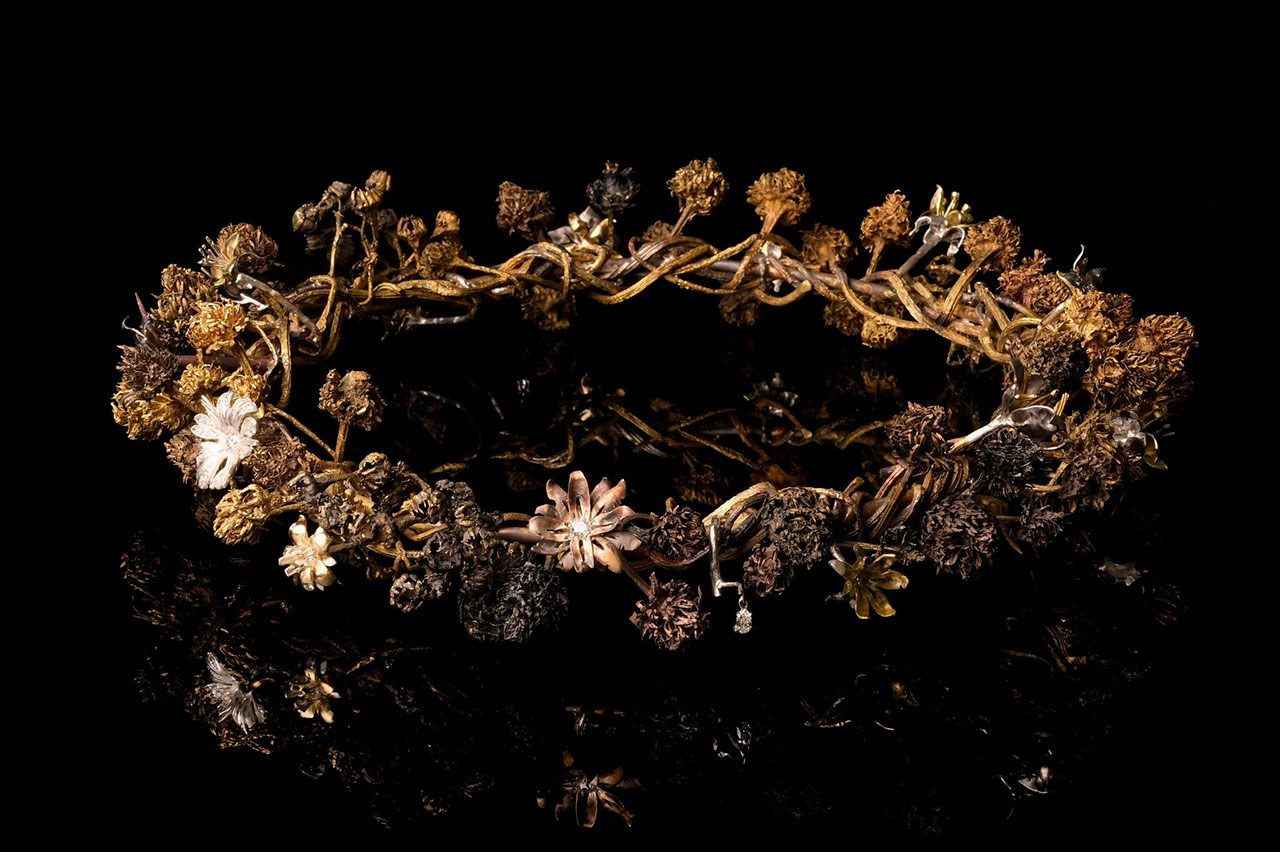 The Boghossian Foundation is proud to present the works of the 2024 International Prize laureates. Bringing together three distinctive creative worlds, thE exhibition celebrates the creativity of Kate Crawford and Vladan Joler, Kim Mupangilaï, and Joy Harvey, this year’s laureates in the fields of Visual arts, Design, and Jewellery. Through their work, each contributes to a greater mutual understanding between cultures. In the garden of the Villa Empain, the monumental work “Calculating Empires” by the duo Kate Crawford and Vladan Joler unfolds across 23 metres. This installation exposes the invisible structures of power in the age of artificial intelligence, delving into the geopolitics of data and global infrastructures. Through this committed cartography, the artists interrogate the networks of labor, resources and control that shape our connected world. In the former Secretary of the baron Empain, the creations of Kim Mupangilaï and Joy Harvey explore the dialogue between heritage and innovation. Joy Harvey’s jewellery interlaces Florentine goldsmithing, Armenian craftsmanship, and digital innovation. Info: Boghossian Foundation, Villa Empain, Avenue Franklin Roosevelt, 67, Brussels, Belgium, Duration: 17/6-19/8/2025, Days & Hours: Tue-Sun 11:00-18:00, https://villaempain.com/
The Boghossian Foundation is proud to present the works of the 2024 International Prize laureates. Bringing together three distinctive creative worlds, thE exhibition celebrates the creativity of Kate Crawford and Vladan Joler, Kim Mupangilaï, and Joy Harvey, this year’s laureates in the fields of Visual arts, Design, and Jewellery. Through their work, each contributes to a greater mutual understanding between cultures. In the garden of the Villa Empain, the monumental work “Calculating Empires” by the duo Kate Crawford and Vladan Joler unfolds across 23 metres. This installation exposes the invisible structures of power in the age of artificial intelligence, delving into the geopolitics of data and global infrastructures. Through this committed cartography, the artists interrogate the networks of labor, resources and control that shape our connected world. In the former Secretary of the baron Empain, the creations of Kim Mupangilaï and Joy Harvey explore the dialogue between heritage and innovation. Joy Harvey’s jewellery interlaces Florentine goldsmithing, Armenian craftsmanship, and digital innovation. Info: Boghossian Foundation, Villa Empain, Avenue Franklin Roosevelt, 67, Brussels, Belgium, Duration: 17/6-19/8/2025, Days & Hours: Tue-Sun 11:00-18:00, https://villaempain.com/
